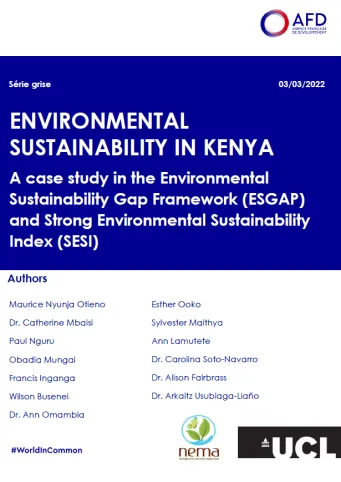Share the page
Environmental Sustainability in Kenya: A case study in the Environmental Sustainability Gap Framework (ESGAP) and Strong Environmental Sustainability Index (SESI)
Published on

To adapt the ESGAP framework to the Kenyan socio-ecological context, this project analysed the in-country environmental legislation landscape and existing environmental policy frameworks to determine challenges, gaps and opportunities for supplementing and strengthen existing processes. Challenges included data quality limitations, availability of adequate indicators and standards, and accessibility to data.
The current Kenya ESGAP framework is composed of 12 indicators (in comparison with the 21 indicators used on the European SESI). Results suggest that the functioning of different elements of natural capital in Kenya, and their capacity to provide essential services in the long-term, is highly impaired because of excessive environmental degradation. The capacity of Kenya’s natural capital to provide critical services to maintain health and contribute to human well-being is the most severely impeded in Kenya.
The ESGAP process has demonstrated to be a useful framework to highlight crucial data gaps and major current threats to environmental sustainability in Kenya. However, further components of natural capital need to be assessed, requiring efforts to improve the data underpinning the framework. The ESGAP framework could be used as an important tool to integrate data and indicators for natural capital and environmental sustainability into economic planning complementing and cross benefiting from other adopted national processes to support environmental planning and management.
Useful Information
-
Authors
-
Maurice Nyunja Otieno, Catherine Mbaisi, Catherine Mbaisi, Obadia Mungai, Francis Inganga, Wilson Busenei, Ann Omambia, Esther Ooko, Sylvester Maithya, Ann Lamutete, Carolina Soto-Navarro, Alison Fairbrass , Arkaitz Usubiaga-Liaño
-
Coordinators
-
Number of pages
-
102
-
Collection
-
Grey Collection
